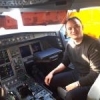
Sign in to follow this
Followers
0

Air France Flight 447: 'Damn it, we’re going to crash’
By
OmniAtlas, in Hangar Chat


By
OmniAtlas, in Hangar Chat